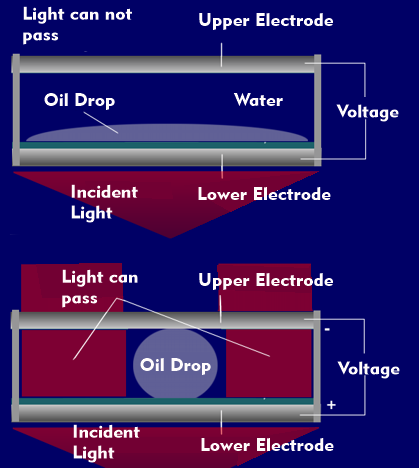Electrowetting-Display
Emitting displays such as the TFT display, LED display or OLED display have the disadvantage that the display is difficult or impossible to recognize in bright daylight or unfavorable sunlight. This is not the case with reflective displays. They can be used in bright sunlight. With these displays, the sunlight is reflected by the pixels.
Electronic Paper Displays( EPD), also known as E-Paper or E-Ink, belong to the reflective displays. Color displays that are reflective-based include the Mirasol display, MIP display, and electrowetting display. However, these displays have certain limitations in terms of color reproduction.
Electrowetting uses a microfluidic phenomenon with which liquid droplets can be changed in shape or displaced when a voltage is applied. The latter is done in the electrowetting display. In this process, two liquids that do not mix are in microchambers. The chambers have transparent electrodes made of indium tin oxide( ITO) on the inside. When a voltage is applied to the electrodes, the liquids shift. One liquid is colored. The observer sees either the colored or the non-colored liquid from the outside. The dyed liquid can be placed in a depot where it cannot be seen by the observer.
Different variants have been developed with liquid chambers arranged side by side and one above the other, and also single chambers with several different liquids. If several liquid chambers with differently colored liquids in cyan, magenta, yellow are arranged one above the other, then a display with subtractive color mixing can be constructed from them.

